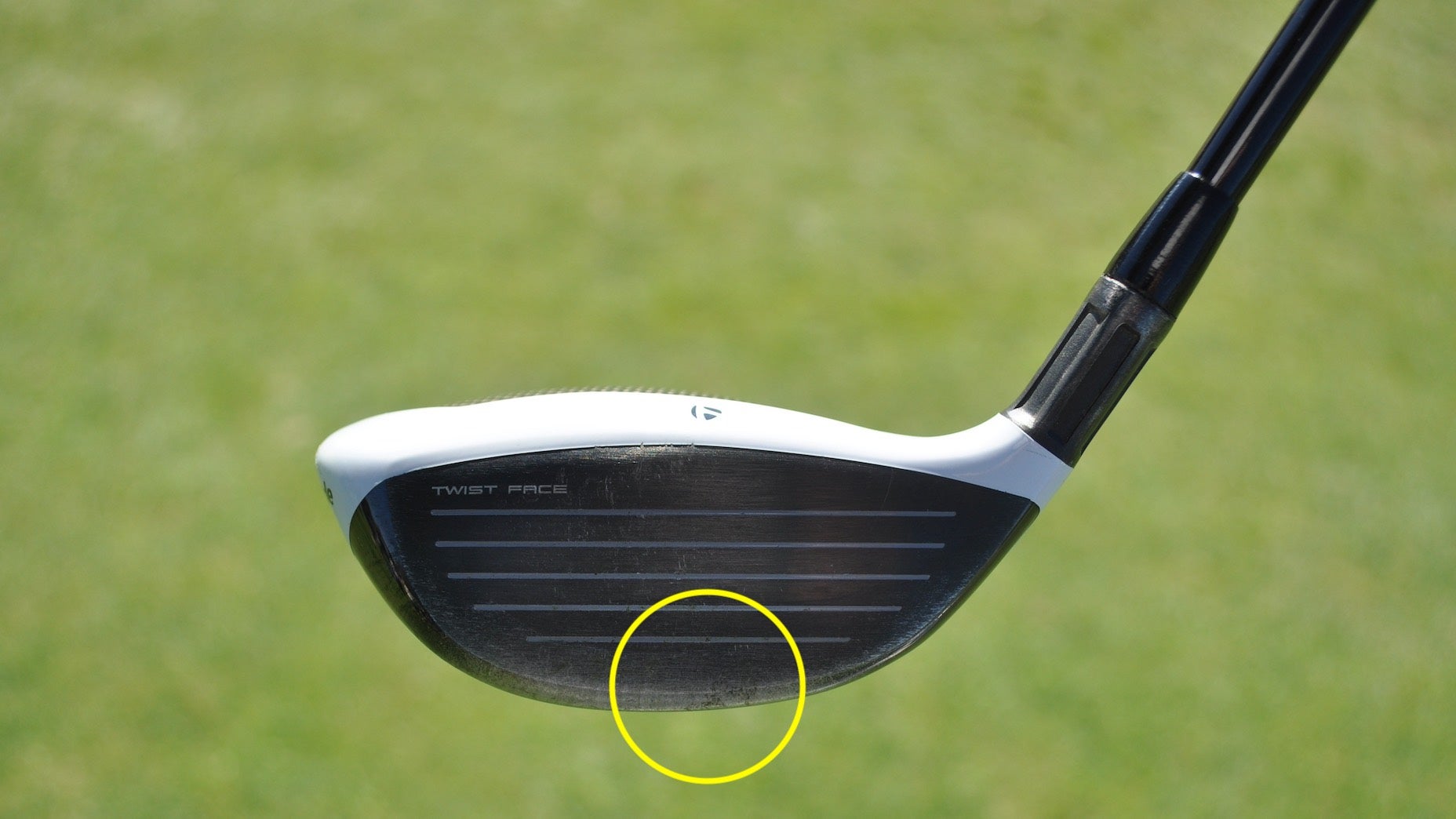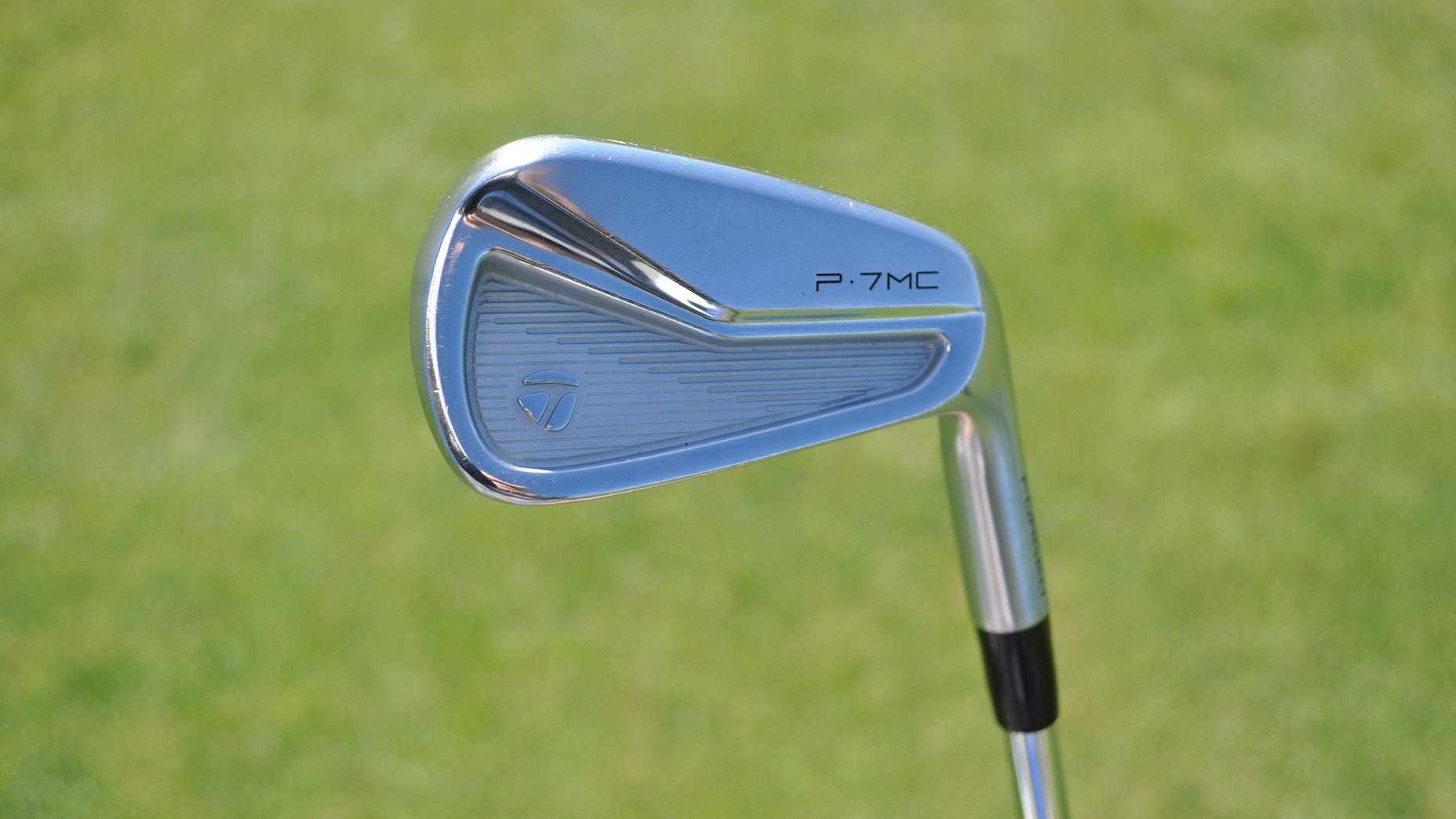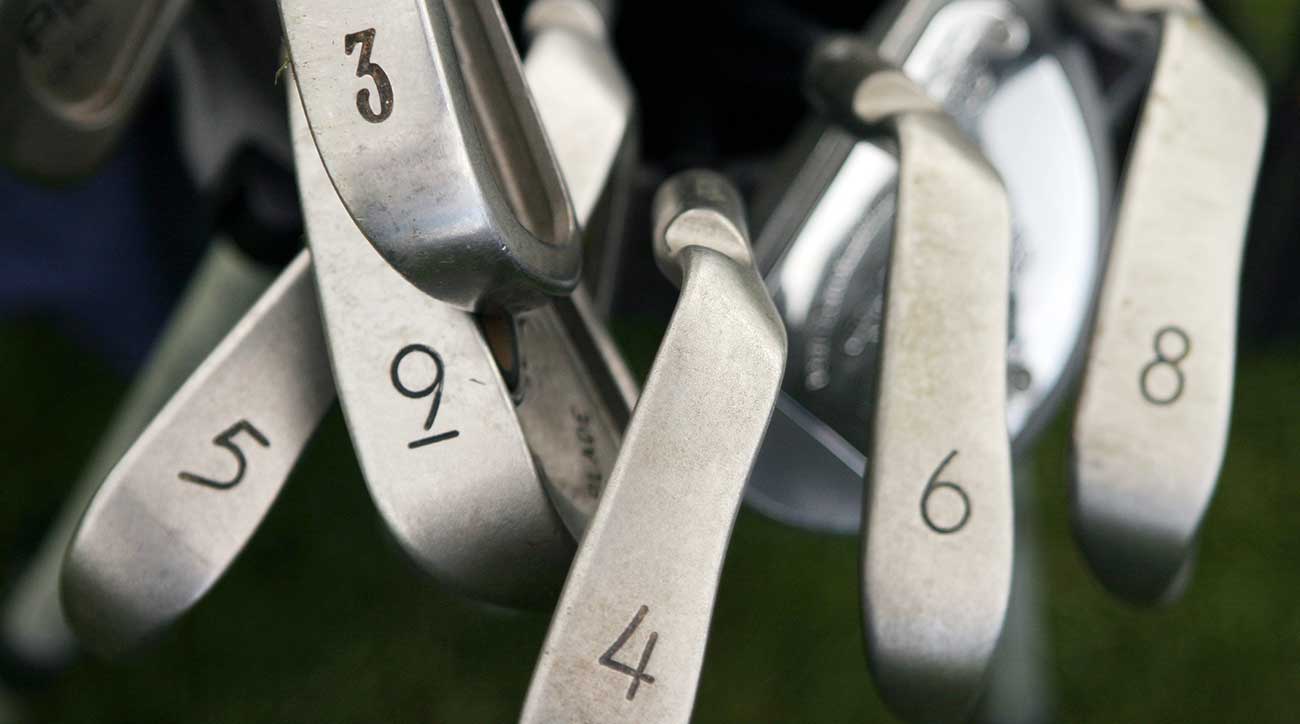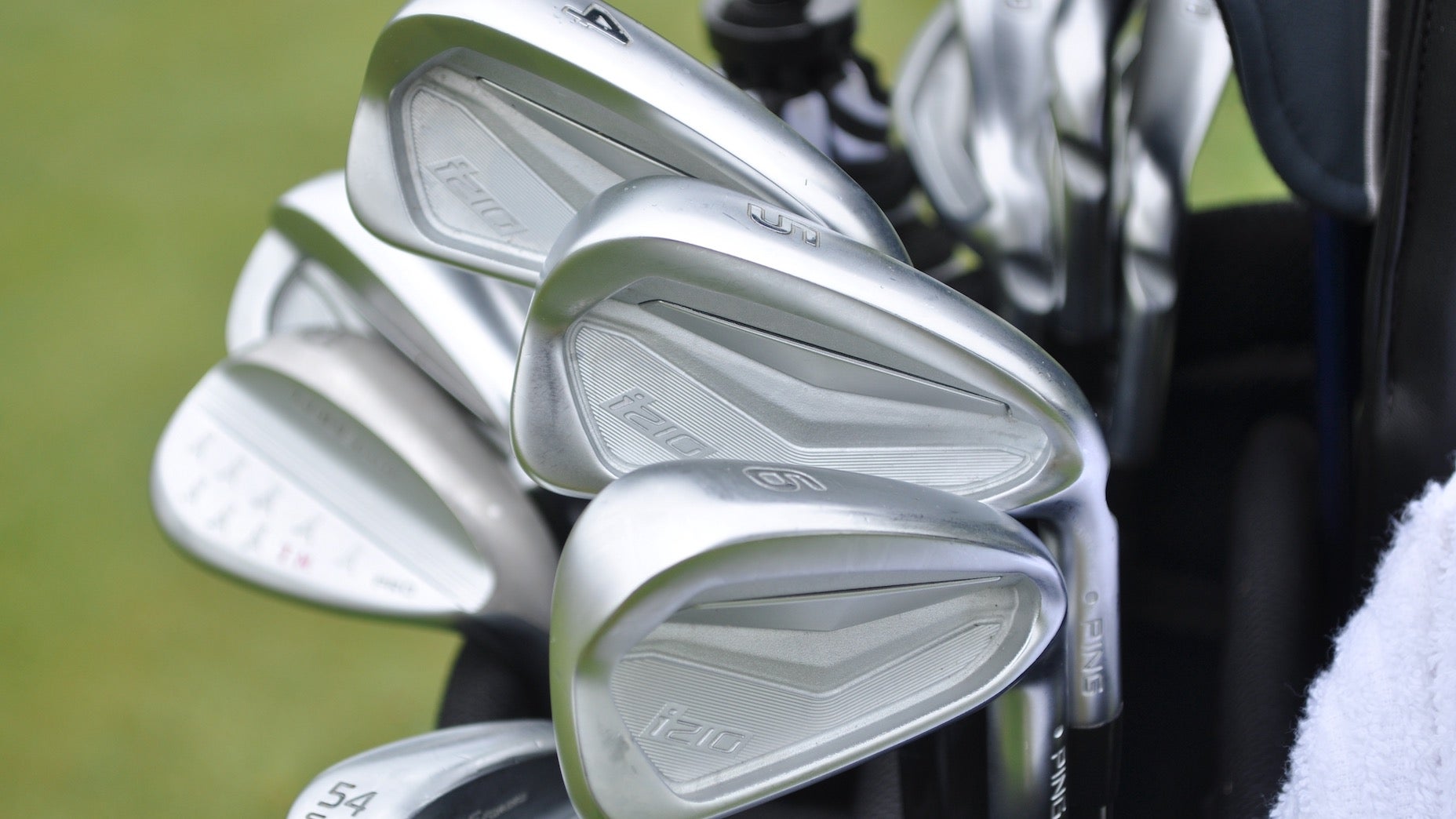Inside Jason Day’s golf bag: 7 things I noticed while inspecting his clubs

Day recently switched to a Toulon Daytona mallet.
Jonathan Wall/GOLF
Truth be told, Jason Day was already slated to be the next pro we spotlighted in our reoccurring “Inside the golf bag” series before his multi-year golf ball deal with Bridgestone was announced. While Day’s golf ball is under contract, the rest of his setup remains up for grabs.
The former major winner has employed a number of different brands since joining the gear free agent ranks last year. As we’ve stated before on GOLF’s Fully Equipped podcast, you can usually figure out what’s trending on Tour by looking through the bags of the free agents. Without a guaranteed deal tying them to a particular brand, pros like Day can pick and choose the best setup for their game without any strings attached.
With one year of gear free agency under his belt, here’s a look at 7 things that stood out as I took in-hand photos of the former major winner’s gear earlier this year.
Mr. Clean

What stands out when you look at Day’s Toulon Daytona mallet? More specifically, what don’t you see? Day is one of the few pros on Tour who wields a putter without an alignment line — something he’s done since 2014.
At the time, Day was using a Spider 72 mallet with a line on top to create a visual line from “ball to the hole.” But for whatever reason, the alignment aid was no longer doing the trick. In Day’s mind, it was having the opposite effect.
“I couldn’t quite see the line anymore,” Day told me in 2014. “Normally when I’m over the putt I can see the line from the ball to the hole. Well, I couldn’t see it rolling and tracking, and that’s how I’ve always read putts.”
Going away from an alignment line helped free Day up and visualize the ball to the hole. He would go on to win five times in 2015, including the PGA Championship, on his way to the top spot in the Official World Golf Ranking.
Bottom line, an alignment aid isn’t for everyone.
Seeing Red

The TPT Red Range 15 Lo shaft is Day’s Ping G410 LST driver isn’t something you see every day on Tour. Day was actually one of the first pros to give TPT a shot when it was introduced and recently recorded his best finish in a stroke-play event since 2018, when he placed T3 at the Farmers Insurance Open.
The Red version he uses is a low launch profile, which makes sense when you consider all the work Day’s done to shift his flight down (more on that in a moment) over the course of his career. From a design perspective, TPT’s “special sauce” is an automated manufacturing process — most shafts are rolled by hand — that’s designed to make each piece more consistent and tighten dispersion.
Day has used several different driver heads since he became a free agent, but TPT has remained his shaft of choice along the way. Similar to Jon Rahm and his Aldila shaft, there are certain aspects of the driver build that Day doesn’t want to change. The shaft is one of them.
Multi-purpose club

With only a driver and 3-wood in the bag most weeks, it’s no surprise that Day’s TaylorMade SIM Max 15-degree sees a lot of use. The finish along the leading along has worn off since it went in play at the 2021 Masters — a clear indication of how the Aussie utilizes the club. It sees plenty of action from from the tee and fairway.
“I use my 3-wood a fair bit during a round,” Day said. “I don’t view it as something that only gets used off the tee. I have some other options at the top of the bag, but I know what this club can do and don’t really see a need to change. Once I find a fairway wood I like, I tend to stick with it.”
Day’s fairway wood comment is sage advice for the recreational golfer. If you have a multipurpose fairway wood that can execute a myriad of shots, you ride that club until the wheels come off. Out all the clubs in the bag, most Tour pros generally have a difficult time finding a suitable fairway wood replacement.
Checks the box

We’ve seen plenty of Tour pros add forgiving long irons and multiple models to their iron setup — but Day isn’t one of them. Although Day has gone away from the P760 cavity-back irons he played during his time as a TaylorMade staffer, he continues to play a fairly traditional iron setup in the P7MC.
Day’s set composition is 4-iron through pitching wedge in TaylorMade’s better-player cavity-back model. The addition of perimeter weighting gives P7MC a hint of forgiveness, but don’t mistake this beauty for a ball speed machine. The P7MC is geared for elite-level ball-strikers who know what they’re doing. There’s a reason why Day (along with Collin Morikawa) swear by these sticks.
A little bit of forgiveness is a big deal for a pro, but what Day appreciates most about P7MC is the ability to work the ball with a slightly lower launch window.
That’s the ticket

There are numerous ways to lower iron launch and corral spin. You can bend the head stronger to strengthen loft, but doing so typically requires carry distances to be recalibrated. As Jason Day found out in 2015, equipment can help solve the problem as well. Feeling as if his irons were launching too high and producing excess spin, Day tested a True Temper shaft that’s the stiffest steel product in the marketplace — Dynamic Gold Tour Issue X7.
Day remains one of the only players in professional golf who employs the exceptionally stiff iron shaft.
Compared to standard X100, the X7 product is 4-5 grams heavier at 134 and 135 grams, and features a thicker butt section that reinforces the overall stiffer feel. The sturdy shaft profile helped Day reduce launch by 1 degree and knock off 400-500 RPMs of spin through the bag.
It should be noted that Day only uses X7 in his irons, where he feels it offers the biggest launch and spin advantage. Which brings us to the wedge shafts.
Dial it back

Popularized by Tiger Woods — True Temper Dynamic Gold X100 in the irons and S400 in the wedges — during his heyday, there’s a benefit to be had going with a softer flex in the wedges. While it varies from player to player, most will notice a slightly lower ball flight and more feel in the hands with a softer flex.
For some, it can also help maintain spin compared to using the same shaft across the board. Considering many Tour players prioritize feel, consistency and control on shorter approach shots, it’s easy to see why so many drop down in flex with the wedges.
In Day’s case, shifting from X7 to S400 is necessary to maintain the touch and feel required to hit deft pitch and flop shots on Tour setups each week.
It’s good to have options

For a pro who goes to great lengths to lower launch, TaylorMade’s P790 3-iron ably covers the carry yardage gap that might otherwise be filled by a 7-wood or hybrid for most of Day’s colleagues. The long iron acts as a secondary option of the tee with a penetrating flight that’s dialed down even further with the help of Dynamic Gold X7 Tour Issue.
If Day is struggling to find the fairway off the tee, this is the kind of club that can help him get back on track.
Want to overhaul your bag for 2022? Find a fitting location near you at GOLF’s affiliate company True Spec Golf. For more on the latest gear news and information, check out our latest Fully Equipped podcast below.










